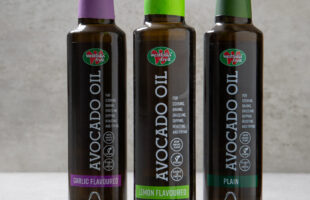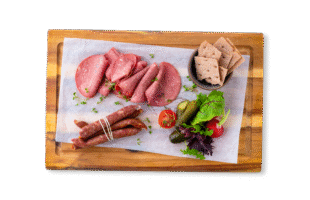
Courtesy of Nadya Spetnitskaya/Pexels
Baking Ingredients
Baking has been in practice for centuries around the world. It was always popular and has been a part of the culture in developed regions such as North America and Europe. Egypt, the originator of one of the world’s oldest civilizations, was among the first to start baking bread using yeast. In modern times, bakery products and ingredients have also sustained their popularity, with macroeconomic and cultural factors fueling their growth.
The rising population, growing demand for food, and bread being a staple in many countries are some of the macroeconomic factors driving the growth of the bakery industry, including “baking ingredients.” The market’s most widely used baking ingredients are baking powder & mixes, starch, oils, fats & shortenings, enzymes, and emulsifiers.
Enzymes are used to improve dough structure and softness and increase the shelf-life of products. Enzymes like amylases, xylanases, and lipases are derived from natural sources. Other baking ingredients, such as leavening agents (yeast extracts), are primarily used for fermentation in baking. Emulsifiers such as lecithin are used in baked products to improve bread’s water absorption, crumb structure, and slicing characteristics.
Lecithin is a natural emulsifier that accounts for the major share of the baking ingredients market and drives the low-fat foods market. Emerging markets in the Middle East, such as the UAE, Saudi Arabia, Kuwait, and Qatar, have a strong potential for growth in the baking ingredients market.
The outbreak of COVID-19 and the Russia-Ukraine war-related inflation significantly impacted the entire food & beverage industry, including the bakery. The disruption in logistics facilities due to lockdowns and the war has slightly affected the market. Russia and Ukraine were among the top wheat-exporting countries in the Middle East.
With the supply of wheat being disrupted, the Middle Eastern baking ingredients market is expected to have a slight impact.
The Middle Eastern baking ingredients market recorded a value of USD 941.5 million in 2022. It is projected to grow at a CAGR of 3.4 percent till 2026.
Technologies Related To Baking Ingredients
Several trends drive innovation in the bakery products and ingredients sector, providing products formulated with plant protein, healthier fats, creative flavors, color combinations, or less sugar and synthetic ingredients. The industry is seeing major innovations in clean-label, vegan, and gluten-free offerings.
Transcendental Emulsification
New emulsifier options have assisted bakers in removing trans-fats from their products by replacing vegetable- or palm oil-based shortenings. Manufacturers have introduced an emulsification ingredient that performs well in baking formulations without negatively impacting the flavor or increasing the saturated fat levels. It lets bakers respond to consumer demands for cleaner nutrition labels. Also available are new carbohydrate-based emulsifiers that function as stabilizers for trans-fat-free shortenings. They work especially well to prevent oil from separating in frosting formulations, even at temperatures up to 160°F.
Key Drivers Contributing To the Growth
The region’s bakery market is gaining momentum due to the increasing population, accessibility, and wealth. Innovation also supports growth. The freshness trend is getting stronger in the region as consumers prefer freshly baked bread and pastry products, leading consumers to transition from supermarket bakeries to specialized bakers. The demand for better-for-you products has influenced the bread category in the Middle East. At the same time, the gluten-free market is gaining more traction.
Bread with spelt flour or pastry products with filo dough is set to witness higher demand in the region. These factors create an opportunity for baking ingredient companies and bakery product manufacturers in the Middle East to merge indulgence and health by creating smaller, decadent-baked foods with healthier baking ingredients. All these factors are expected to drive the demand for baking ingredients during the forecast period in the Middle East.
Rising demand for healthy baking ingredients in the Middle East
As per an article published in March 2021 in Gulf Today, Middle Eastern consumers are more focused on healthier lifestyles because of the growing interest in nutrition. Factors such as the COVID-19 pandemic, the rise in the prevalence of obesity, and the introduction of the UAE government’s sugar taxes to promote healthier eating habits drive consumer behavior toward healthier choices. Therefore, as consumers become increasingly aware of their health issues, health and wellness bakery products, such as whole wheat, reduced sugar, and gluten-free commodities, are expected to acquire greater importance and popularity. These are expected to increase the demand for healthy baking ingredients, such as fibers, enzymes, and emulsifiers.
Rising sales of baked goods in Saudi Arabia
Saudi Arabia is one of the biggest countries in the Middle East. It is also the biggest in terms of bakery product consumption in the region, along with being the 20th largest bakery products market in the world. This is primarily due to its high bread consumption. Furthermore, e-commerce has driven overall sales in Saudi Arabia by allowing for accessibility, discounted prices, and a variety of bakery products. This has driven the consumption and production of various bakery & confectionery products, causing the demand for various baking ingredients to surge.
Key Segments of the Middle Eastern Baking Ingredients Market
- In the Middle Eastern baking ingredients market, the bread segment by application is estimated to dominate. This is because bread is a staple in several households in the region. Saudi Arabia is among the world’s largest consumers of bread, contributing significantly to the segment’s dominance in the region’s baking ingredients market.
- In the UAE baking ingredients market, the fiber segment by type is projected to grow at the highest rate. This is due to the country’s high demand for healthy bakery products due to the rising health consciousness in the Emirates.
- In Saudi Arabia, cakes are projected to dominate the market through sweet bakery applications. According to Agriculture and Agri-Food Canada, 98 percent of Canada’s main bakery exports to Saudi Arabia were bread, pastry, and cakes. This justifies the country’s demand for cakes.
- The UAE is estimated to be the largest Middle Eastern baking ingredients market. It is also projected to have the highest growth rate in the region. The rise in wealth, high demand for healthy baking ingredients, and high indulgence of the population in sophisticated artisanal bakeries are expected to drive the market’s growth in the Middle East.
Way Forward
The Middle East is an attractive market for players involved in many industries. It is present at a geographically strategic location between Europe and Asia, which offers investors and exporters around the globe many trans-continental benefits. Factors such as strong and advanced infrastructure, urbanization, and disposable incomes make it more lucrative. Therefore, many players in the baking ingredients industry, such as Cargill, Incorporated (US), Associated British Foods PLC (UK), and Kerry Group Plc (Ireland), have a strong sales presence in the region.
The demand for bakery products and ingredients has been high in the region. The growth is further expected to surge, with rising demand for healthier ingredients and products. Furthermore, the increase in convenience and ready-to-go foods is gaining popularity across Turkey, Cyprus, Syria, Lebanon, Iraq, Iran, and Israel. This is because readymade food products, such as baked goods, save time and energy.
Furthermore, ease of use, high nutritional value, functionality, and quick delivery are a few of the many attributes consumers seek in frozen and fresh-baked foods. Hence, baking ingredient companies must develop increasingly innovative and creative ideas to meet this demand. The outlook for the baking ingredients companies is positive in all the countries across the Middle East, with markets providing ample scope for growth.









